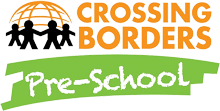If you’re reading this blog, you’re obviously interested in the way a bilingual preschool can benefit your child, both during their traditional school years and later on in their adult life. In previous posts, we’ve discussed why early childhood is the best time for language immersion, how it has been scientifically linked to improved linguistics, better cognition, and cultural enrichment, and how learning a language at a young age can set a strong foundation for future professional success.
It’s important to remember, however, that it takes more than a bilingual preschool to raise a bilingual child. Crossing Borders Preschool can provide an immersive experience, but this environment must be supported at home in order to result in genuine fluency. Of course, each household is different and we realize it’s important to support parents and other siblings in this endeavor. Here are some tips for both bilingual and monolingual families hoping to raise a bilingual child.
If You’re A Bilingual Family…
- Select one parent as the English-speaking parent and one parent who’ll be the one to speak the child’s second language.
- Pay attention to immersion time. According to Omniglot, “research suggests that a child needs to be exposed to a language 30% of his or her waking time to actively speak it.” Enrolling in a bilingual preschool helps to make the most of this percentage, but it’s obviously important to reinforce school-time lessons at home.
- Ignore the doubters. There are some people (and early childhood development professionals) who’ll tell you that it’s not right to “force” two languages on a child. However, you ultimately know what’s best for your child. Realize that their young brain is very nimble, and you’re giving them a skill that will be valuable for life.
If You’re A Monolingual Family…
- Focus on perseverance. Families that don’t naturally speak a second language will have a harder road to climb when it comes to raising a bilingual child, but it’s important to realize it’s not impossible.
- Enroll in a bilingual preschool. This might seem like a self-serving point, but it’s been proven that complete immersion, even if it’s only for a few hours every day, is the only way to jumpstart a second language for a young child.
- Learn alongside your child. Helping your child with homework, or asking them to “teach” you what they learned at their bilingual preschool will not only reinforce their lesson, but give you a way to communicate with them at home.
- Utilize apps, toys, and books that provide additional exposure to their second language. There are lots of great apps that can be loaded on a phone or tablet to provide easy lessons while you’re in the car or waiting to board a plane. Also, choosing to add some bilingual storybooks to your child’s bookshelf are a great way to make the language part of their everyday life. It also reinforces reading and writing skills in their second language.
Crossing Borders Preschool prides itself on providing lots of support our students’ parents. We are a community in addition to being a bilingual preschool, and we want the experience of learning a second or third language to be enriching for your entire family. Contact us for more information today!

